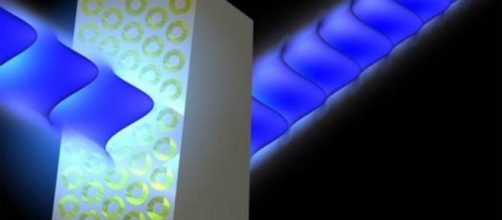A new metamaterial was invented that can manipulate ‘’sound’’, it can bend and shape and focus Sound Waves that pass through it, and it can be configured to serve a specific purpose with sound waves.
The invention was introduced by a research team from the Universities of Sussex and Bristol, the research was published in Nature communications.
Metamaterials
Metamaterials are engineered materials that can serve nature-defining purposes; most of the metamaterials are designed on computers through 3D printing. Metamaterials have already shown striking success with light waves, scientists have been successfully able to manipulate light for definitive purposes.
The researchers from the University of Sussex have shown that they can also control sound waves which can be used to manipulate regular audio and also sound waves that are used for medical purposes.
The new metamaterial is created in a ‘’maze-like’’ shape in which sound waves pass through; when waves go through the material they could be manipulated by the ‘’shape’’ of the maze, so we could configure the shape of the metamaterial to serve any specific purpose in mind.
Applications for the metamaterial
Such metamaterials have several applications; for example, sound waves ‘’especially ultra-sound waves’’ are used in medical situations like destroying tumors inside the body; metamaterials could focus the ultrasound waves in a specific area and this could be extremely useful in such procedures.
Metamaterials also could be used to focus audio sound and form an audio ‘’Hot Spot’’, which also could be useful in specific cases, these metamaterials could fit into almost any sound source even the already existing ones; you will not need a speaker tailored for it.
Professor of Ultrasonics Bruce Drinkwater also said: "In the future, I think there will be many exciting applications of this technology.
We are now working on making the metamaterial layers dynamically reconfigurable. This will mean we can make cheap imaging systems which could be used either for medical diagnostics or crack detection."
This is a brilliant invention that will surely have very interesting applications in the future.

